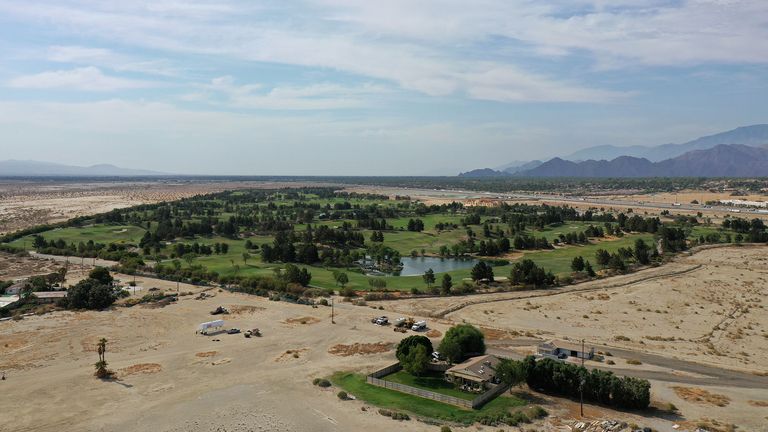Officials in British Columbia believe that record-shattering heat may be responsible for dozens of deaths over the past few days.
It is a stark and tragic example of what happens when regions used to one thing, in this case, rainfall and moderate temperatures, are suddenly faced with the other extreme.
Unfortunately, we can expect much more of this.
While it is always difficult to directly connect one single weather event to climate change, experts say that our warming world will make things like heatwaves, storms and droughts more frequent and more severe.
In its national climate assessment, the US government said: “Human-induced climate change has already increased the number and strength of some of these extreme events.
“Over the last 50 years, much of the U.S. has seen increases in prolonged periods of excessively high temperatures, heavy downpours, and in some regions, severe floods and droughts.”
California is a great example of a place that is being shaped by climate change.
It is well used to devastating fire seasons, but braced for worse to come.
The state has been dealing with two years of drought and is expecting another, which not only provides perfect conditions for fires but has far-reaching implications for agriculture and ultimately the food supply.
Some farmers, for example, are already abandoning or choosing not to plant “thirsty” crops like asparagus and reducing herd sizes to conserve water.
California currently supplies two-thirds of America’s fruit and one-third of its vegetables, but one wonders how much longer this can continue to be the case.
The immediate human cost of heatwaves in Canada, flooding in Bangladesh, hurricanes in the United States and wildfires in Australia is of course high.
But the ripple effects caused by extreme weather events are what will multiply the stresses and strains on the systems that keep our world running.
Consider the economic cost of recovery from catastrophic flooding, which can and does run into the billions, as it did with Superstorm Sandy in 2012.
This is affecting the insurance industry, which has started to withdraw altogether from insuring some flood or storm-prone areas.
The knock-on effects on property prices can be devastating.
For tourism too, there are challenges.
Booking anything in some parts of the world during hurricane season seems foolhardy when the predictions are that these monster storms will get more frequent and more severe.
Then there’s the effect of extreme weather events on the movement of people.
Drought in Central America is one of the drivers of the great migration north.
Increasingly unpredictable rainfall in Southeast Asia has driven eight million people towards the Middle East, Europe and North America, and in the African Sahel millions are fleeing drought and crop failure.
The effect of more people squeezing into smaller areas is well documented; resources come under pressure, the risk of conflict increases, and so, of course, does the suffering.
These are just some examples of the fallout from headline-grabbing extreme weather events.
And as the heatwave in the pacific Northwest shows, even as the world scrambles to limit the worst outcomes of global warming, there are few places on Earth that will escape.
Sky News has launched the first daily prime time news show dedicated to climate change.
The Daily Climate Show is broadcast at 6.30pm and 9.30pm Monday to Friday on Sky News, the Sky News website and app, on YouTube and Twitter.
Hosted by Anna Jones, it follows Sky News correspondents as they investigate how global warming is changing our landscape and how we all live our lives.
The show also highlights solutions to the crisis and how small changes can make a big difference.




